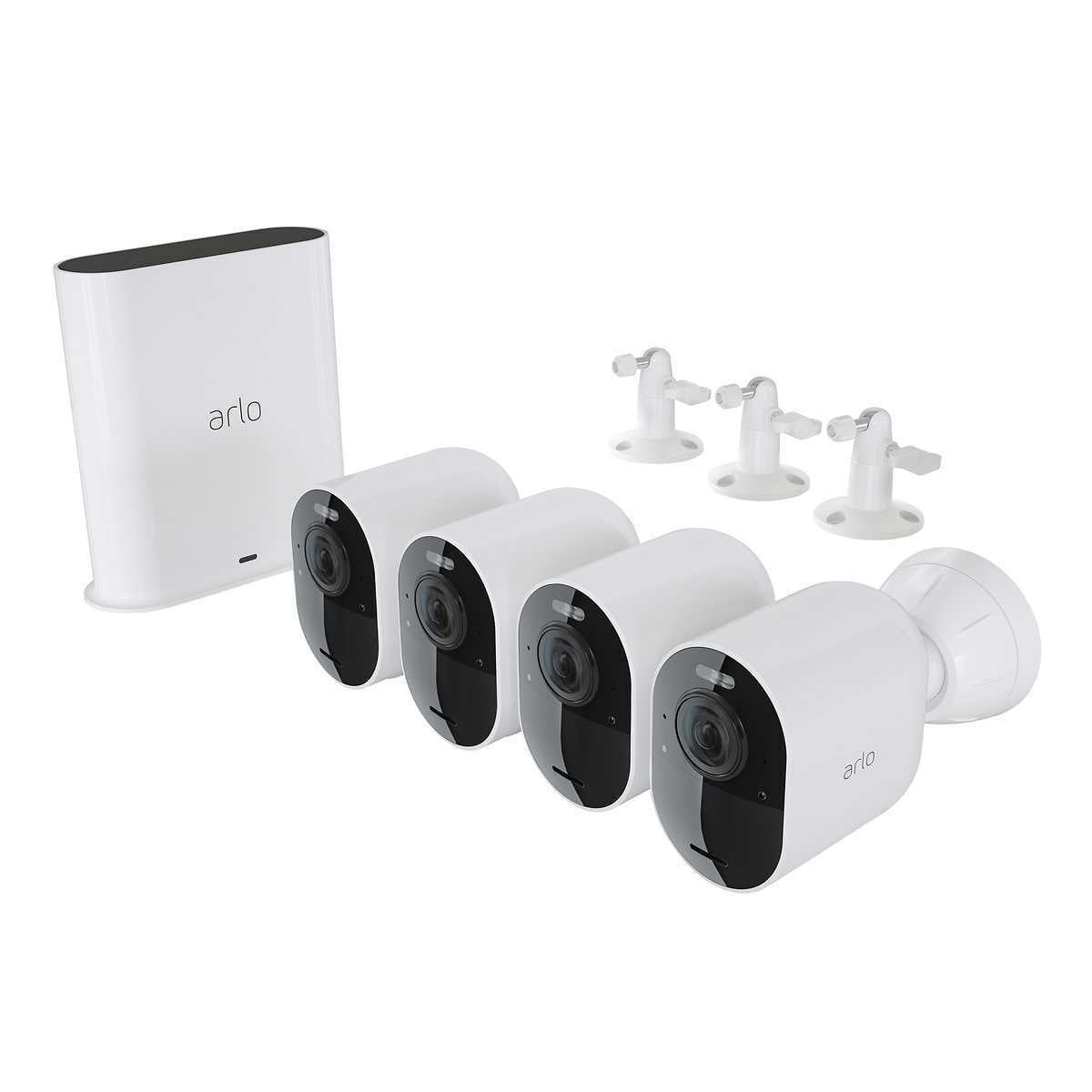

You can also remove all dangerous plants from your home or put them out of the reach of the cat. You can also smear fish oil on softened hide sticks and give it to them. This can help curb the behavior since there wouldn’t be any non-edible material around to ingest.Ĭats can also be given chew toys to chew and play with. You can also remove susceptible materials such as paper, plastics, fabrics, etc., from their reach. For example, introducing large dry food sizes or food with more fiber in their diet may help solve this problem. You can also play with them regularly to deviate their attention from eating unusual items, a minimum of 30 mins per day.Ĭhanging their diets can also help curb this behavior. Stimulating them mentally or physically through puzzle feeders, interactive toys such as fish-pole/rod toys and ping pongs, maze feeders, etc., can help relieve stress or boredom.
ARLO SECURITY CAMERA SYSTEM HOW TO
If your cat is cleared, your vet will now strategize with you how to get to stop your cat from eating unusual items.Įngaging your cat can be said to be the next line of action. Next, your veterinarian will conduct some tests to rule out any medical condition. Once you are confident that your cat has pica syndrome, the next stage is managing it.įor most pet owners, talking to your veterinarian is the first step to do to see if there is any medical condition to be considered. The most reliable way of knowing your cat has pica as a pet owner is to catch your cat in the act, as most of the items eaten would have no traces left. Some house plants (e.g., lilies, tulips, chrysanthemums, English ivy) eaten by cats are poisonous and can significantly harm them.Ĭats with pica syndrome may get electrocuted when they eat wires with an electrical current in them.

Pet owners should be on the look for these signs. Usually, such foreign objects are allowed to pass out with time through the feces or are removed via surgery (laparotomy). Pica syndrome can cause blockages in the gastrointestinal tract (stomach and intestine) and lead to vomiting, loss of appetite, diarrhea, restlessness (lethargy), constipation, and can even cause death. Wool sucking is very common in oriental cat breeds and has been known to be a predisposition for pica syndrome in such species. Such as anything that serves as an escape when we are going through something, these endorphin rushes can become addictive, leading to the obsessive and compulsive disorder (OCD) – Pica. These endorphins create a soothing and calming effect for the cat and increase the feeling of wellbeing. For cats with pica, finding, chewing, and swallowing non-edible materials serve as a rewarding experience.Ĭhewing and sucking on items releases endorphins, hormones that serve as pain relievers in the body. Approximately 2.5% of cats in the United States have pica syndrome.Ī cat suffering from pica syndrome will go to all lengths to find and chew its favorite material. So pet owners need to differentiate between these two.īefore a cat is diagnosed with pica, it means the syndrome and behavior have been going on for a long time as cats tend to be very secretive. But it could be the basis for pica syndrome when the cat starts to eat those nonedible items. The suckling and licking of items are not known as pica. Some cats might grow out of it, and others do not grow out of it and become highly resistant to change. It usually starts around three months, the age around which kittens arrive at their new homes. What You Should Know About Feline Picaįeline pica is usually common in young cats, but it can occur in cats of all ages. Compulsive behavior is when certain behaviors (such as pica) persists despite the harm caused to the cat. To them, it provides comfort, relief, and entertainment.Ĭats with pica are said to have a compulsive eating disorder. This enables them to mimic predatory behavior, which is part of their normal instinct.Ĭats with pica chew the material to a great length before swallowing and just do not create a mess compared to cats without pica. This syndrome is different from the usual feline play behavior of tearing materials and sprinkling them around the house. Pica can be found in humans and dogs too. Pica arises from the Latin word for the magpie -”picave.” This is because magpies have been known to eat almost everything. In a simpler term – pica is the eating of abnormal substances. Pica syndrome is a behavioral condition that incites cats to eat non-edible substances such as paper, fabrics, plastics, etc. What do you do when your feline companion has unusual cravings? What classifies as unusual cravings? And it is something you could be concerned about? This article would help you answer these questions. But do we need to find unusual cravings in animals? Well, your guess is as good as mine. Everyone has unusual cravings – from ice cream late at night to pizza and fries and what have you.


 0 kommentar(er)
0 kommentar(er)
